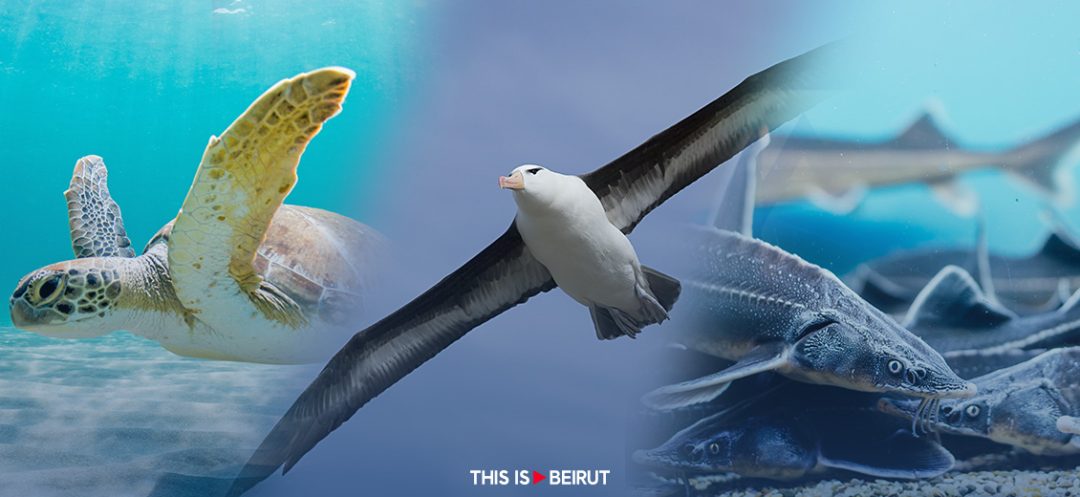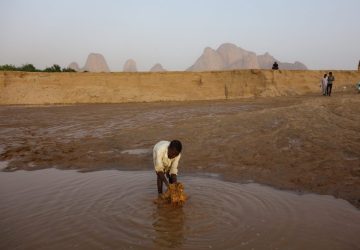Albatrosses, turtles, or sturgeons: the plight of migratory species, vital for nature’s balance, is deteriorating, warns a groundbreaking report published on Monday under the auspices of the UN and reported by AFP.
“Migratory species are being severely impacted,” denounced the head of UN Environment, Inger Andersen.
Among the species listed by the 1979 Bonn Convention on the Conservation of Migratory Species of Wild Animals, one in five faces extinction, and 44% are experiencing population declines.
Nearly all (97%) of the 58 fish species listed are threatened with extinction, mirroring the situation of certain sharks.
The migration phenomenon as such is at risk, given the presence of barriers and the potential pressure on the habitats required by these animals,” emphasized Amy Fraenkel, the Convention’s Executive Secretary, to AFP.
The report was compiled by the administrative body of the Bonn Convention for the fourteenth conference of signatory countries (comprising over 130 nations, excluding the United States and China) in Samarkand, Uzbekistan. The conference is scheduled to be held from February 12th to 17th.
The representatives of the countries involved will address the future of these migratory species. These include iconic creatures of life on Earth such as marine turtles, whales, sharks, elephants, species of wild cats, and numerous birds.
Their migrations can be influenced by many factors, including looking for favorable climatic conditions, access to food, or finding an ideal environment for giving birth to their offspring.
A Future in Jeopardy
The dangers posed to these animals are directly tied to human activity: loss, degradation, or fragmentation of habitats primarily due to intensive agriculture or overexploitation through hunting and fishing, as well as climate change.
Animals also face additional pressures such as pollution (pesticides, plastics, etc.) or underwater noise and light perturbations.
This report underscores how unsustainable human activities jeopardize the future of migratory species,” emphasizes Inger Andersen. “These creatures not only serve as indicators of environmental changes but also play a vital role in maintaining the functions of our planet’s intricate ecosystems and ensuring their resilience,” she notes.
In fact, these species provide numerous services to the planet, such as pollination, nutrient transfer between environments, or pest control.
For instance, bats play a significant role in pollinating flowers and dispersing seeds, facilitating the spread of mangoes or papayas in certain countries.
Endangered Species
The report not only outlines this bleak assessment but also calls for international cooperation to help animals that, by their very nature, know no borders and can sometimes travel thousands of kilometers. The monarch butterfly, for example, can travel 4,000 km across North America.
“These are challenges created by humans and can only be solved by humans,” points out Matthew Collis of the International Fund for Animal Welfare (IFAW) in a statement.
These animals transcend borders, and it is our collective responsibility to ensure that these species can follow the age-old migratory paths of their ancestors,” he adds.
The recommendations, which are intended to feed into the Samarkand conference, also echo the Kunming-Montreal Agreement on biodiversity, established in 2022, which aims to preserve 30% of the planet’s lands and seas by 2030. The authors thus call for “identifying, protecting, connecting, and managing important sites for migratory species.”
Other priorities include addressing illegal or unsustainable fishing, urgently dealing with the most endangered species, and intensifying efforts to tackle various forms of pollution (light, noise, plastic, chemicals, etc.) and climate change.
The report also suggests expanding the list of species listed by the Convention to draw attention to other endangered animals. It lists nearly 400 threatened or near-threatened species that are not yet included in the Convention’s lists, such as the American and European bison or the Indus dolphin.





